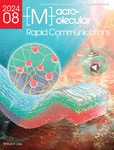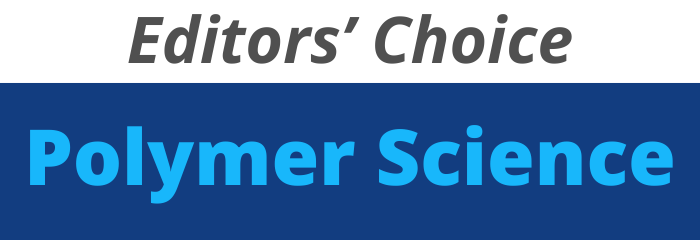Journal list menu
Export Citations
Download PDFs
Cover Picture
Microgel-Crosslinked Thermo-Responsive Hydrogel Actuators with High Mechanical Properties and Rapid Response
- First Published: 22 April 2024
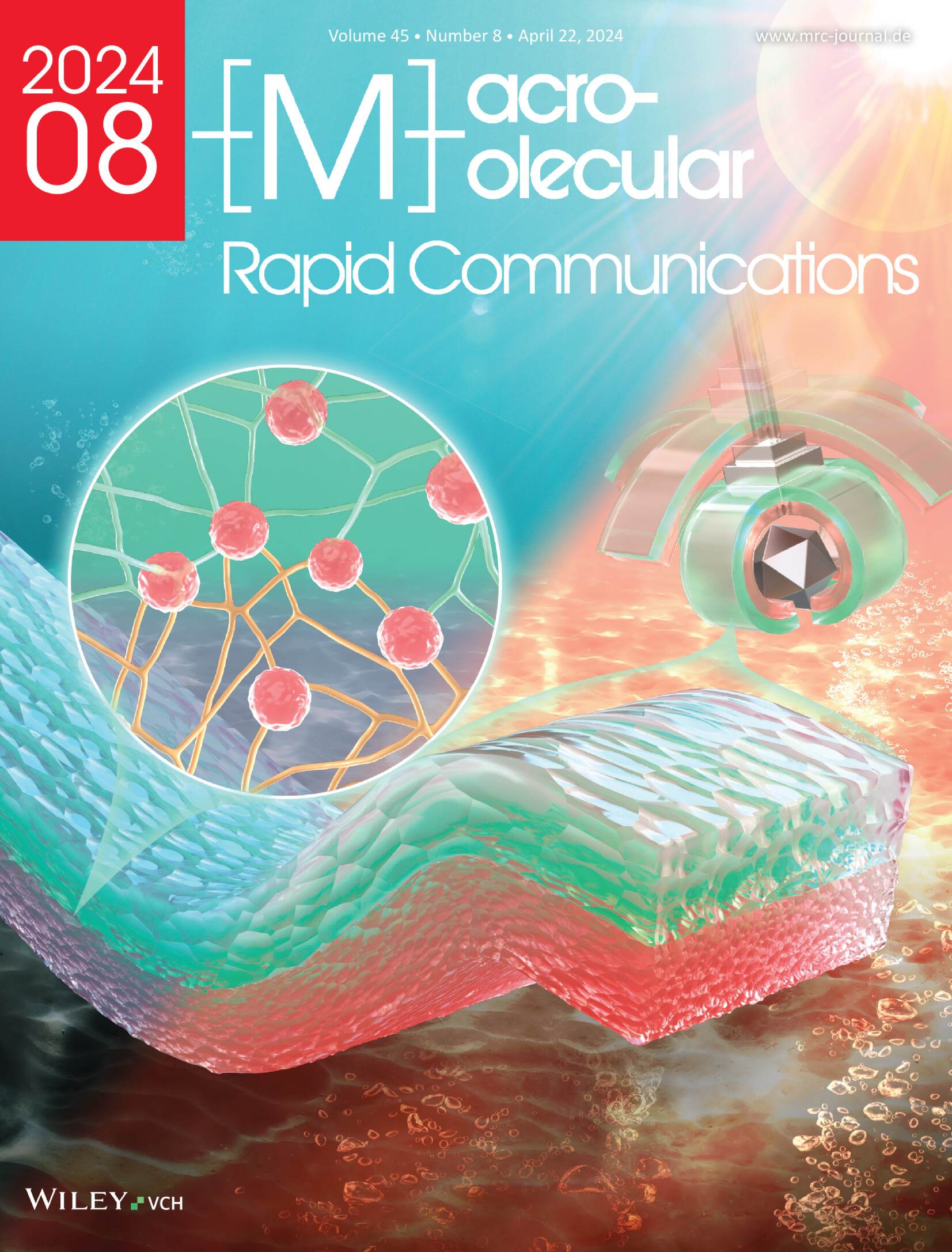
Front Cover: In article 2300643, Rong Wang and co-workers develop a facile way of constructing thermo-responsive hydrogel actuators based on a poly(N-isopropylacrylamide) microgel cross-linking strategy. The bilayer hydrogels show enhanced mechanical properties and tunable response rates, making them highly promising for applications of smart actuating devices.
Masthead
Research Articles
Microgel-Crosslinked Thermo-Responsive Hydrogel Actuators with High Mechanical Properties and Rapid Response
- First Published: 15 January 2024
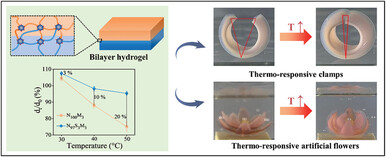
Thermosensitive hydrogels with rapid response and improved mechanical properties are prepared using vinyl-functionalized poly(N-isopropylacrylamide) microgels as macro-crosslinkers. The thermo-responsive behavior of the hydrogels is tuned by incorporation of hydrophilic sodium methacrylate units. Intelligent bilayer hydrogel actuators like claws and artificial flowers are developed using the thermo-responsive hydrogels.
Fast and Scalable Synthetic Route to Densely Grafted, Branched Polystyrenes and Polydienes via Anionic Polymerization Utilizing P2VP as Branching Point
- First Published: 17 January 2024
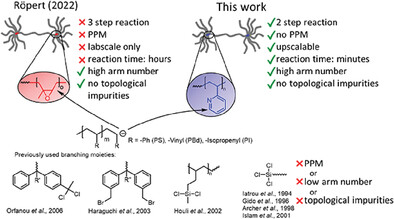
A new, elegant, fast, and scalable synthetic route without the need for post-polymerization modification (PPM) or purification steps to a pom-pom and a broad variety of topologies made from styrene and dienes is reported. The key is to inset poly(2-vinylpyridine) (P2VP) blocks (< 2 mol% in the branched product) into the backbone as branching points for carb anions.
Block Copolymers of Polyolefins with Polyacrylates: Analyzing and Improving the Blocking Efficiencies Using MILRad/ATRP Approach
- First Published: 01 January 2024
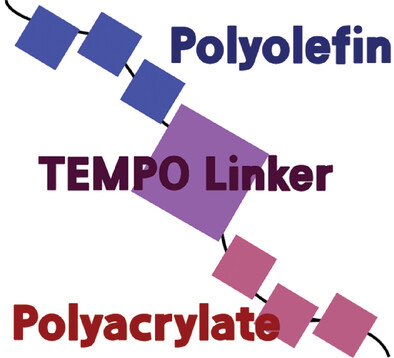
This study investigates the functionalization and initiation efficiency in the MILRad, metal–organic insertion light-initiated radical polymerization approach. Near-quantitative initiation of PE macroinitiator is achieved for preparing PE-b-PMA via supplemental activator and reducing agent atom transfer radical polymerization. Maximizing radical formation and minimizing β-hydride elimination increase radical trapping efficiency and improve the final block copolymer yield.
Porous Poly(ionic Liquid) Membrane with Metal Nanoparticle Gradient: A Smart Actuator for Visualizing Chemical Reactions
- First Published: 17 January 2024
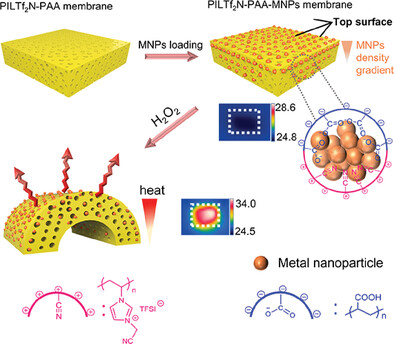
The Poly(ionic liquid)-based membrane (PILTf2N-PAA) with a distinctive metal nanoparticles (MNPs) gradient along its cross-section is fabricated via a templated-based method. The MNPs within hybrid membrane displays excellent catalytic performance toward H2O2 decomposition, dissipating uneven heat that quickly permeates the membrane network. This induces asymmetrical swelling of polymer chains, ultimately causing rapid membrane bending.
Constructing Highly Emissive Covalent Organic Frameworks for Fe3+ Ion Detection via Wall Function
- First Published: 06 January 2024
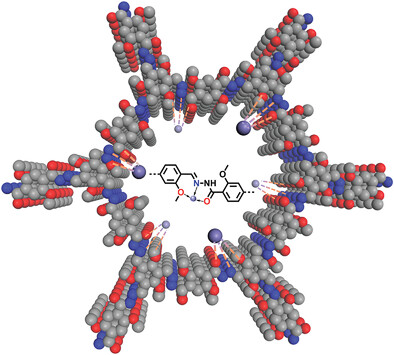
The TM-OMe-EBTHz-COF exhibits strong yellow-green emission in the solid state, with a remarkably high absolute quantum yield of 21.1%, and the methoxy groups with hydrazine linkage form three coordination sites to achieve excellent performances to Fe3+ ions sensing with lower detection limitation below 156 nanomolar. This principle opens the new design for light-emitting materials as metal ions sensing system.
Sprayable Zwitterionic Antibacterial Hydrogel With High Mechanical Resilience and Robust Adhesion for Joint Wound Treatment
- First Published: 18 January 2024
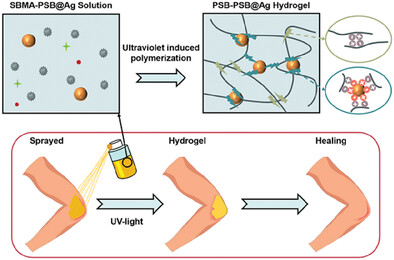
A sprayable zwitterionic antibacterial hydrogel is prepared by utilizing strong electrostatic interactions between sulfobetaine structures. The prepared hydrogel has high mechanical resilience, strong adhesion and dynamic properties, and good antimicrobial properties. In addition, the healing rate of rat neck skin wounds is improved, which has great potential in promoting joint wound healing.
Embedding Thiols into Choline Phosphate Polymer Zwitterions
- First Published: 11 January 2024
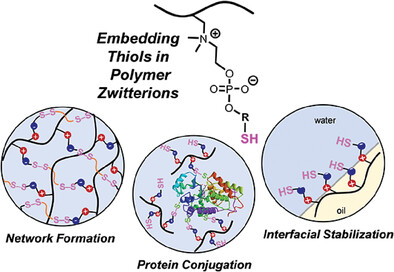
The growing library of designer polymer zwitterions is limited by available versatile/reactive functional groups. Herein, the synthesis of choline phosphate polymer zwitterions with embedded thiols integrated directly adjacent to the zwitterion moiety is reported. The resulting thiol-containing polymer zwitterions form hydrogels, stabilize oil-in-water interfaces, and create polymer-protein bioconjugates through disulfide and thiol-Michael chemistries.
Encounter between Gyroid and Lamellae in Janus Colloidal Particles Self-Assembled by a Rod–Coil Block Copolymer
- First Published: 31 December 2023
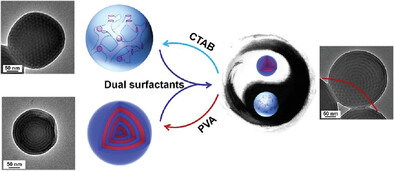
The ratio of dual surfactants is adjusted to control the formation of Janus particles with lamellar and gyroid structures. The transformation from gyroid to lamellae undergoes an epitaxial growth process. The Janus particles can be further restructured into the gyroid or lamellar structure under solvent vapor.
Constructing Novel High Dielectric Constant Polyimides Containing Dipolar Pendant Groups with Enhanced Orientational Polarization
- First Published: 15 January 2024
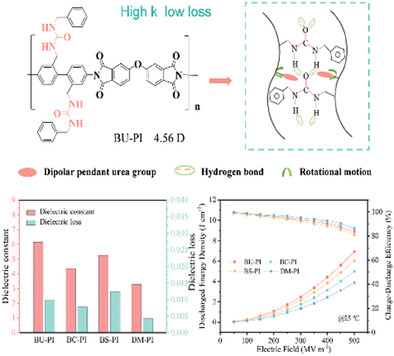
The relatively high dielectric constant and low dielectric loss values for novel polyimides containing high dipolar urea pendant groups are achieved due to the enhanced orientational polarization and suppressed dipole-dipole interactions of dipolar groups. The strong γ transitions with low activation energies shed light on the origin of the enhanced free rotational motion of urea pendant dipoles.
MaDDOSY (Mass Determination Diffusion Ordered Spectroscopy) using an 80 MHz Bench Top NMR for the Rapid Determination of Polymer and Macromolecular Molecular Weight
- First Published: 30 January 2024
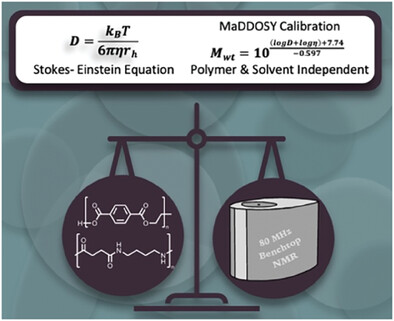
Using diffusion-ordered spectroscopy (DOSY) on an 80 MHz benchtop NMR system, a solvent and polymer-independent calibration is presented for the determination of the molecular weight of macromolecules without the use of deuterated solvents or cryogens. The applicability of this system in a variety of different polymers and the agreement between the DOSY measurement and conventional techniques are shown.




